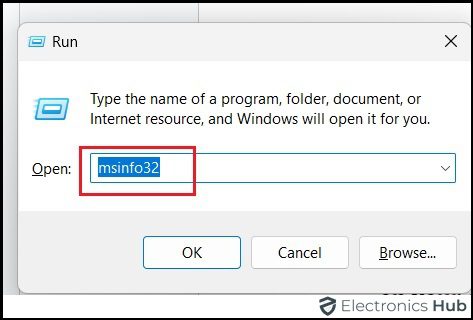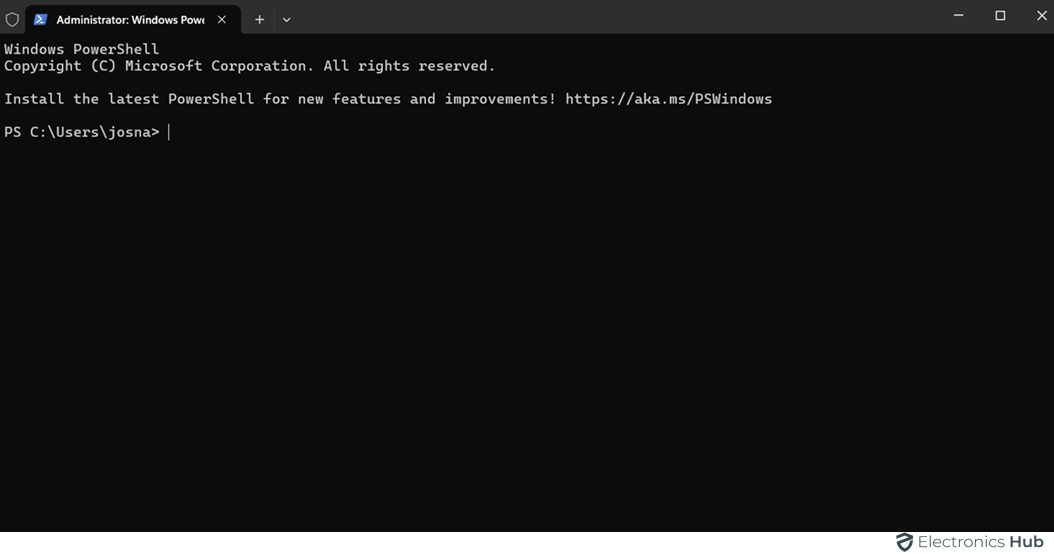Have you ever been working on a crucial project when your computer suddenly grinds to a halt? Maybe you’re juggling multiple programs, editing photos, or running a demanding game, and your system feels sluggish and unresponsive. This could be a sign that your computer’s RAM (Random Access Memory) is maxed out.
Upgrading your RAM is a great way to improve performance, but before you hit “buy” on new memory sticks, you need to know exactly how much RAM your computer can handle. In this blog post, we’ll walk you through several methods to find out the maximum RAM capacity for your specific machine, ensuring a smooth upgrade and a significant performance boost.
Outline
ToggleHow To Check Maximum RAM Capacity?
1. Using System Information
This is the simplest method and provides a quick overview of your RAM capacity. Here’s how to do it:
- Step 1: Press the Windows key + R simultaneously on your keyboard. This will open the Run dialog box.
- Step 2: In the Run dialog box, type msinfo32 and press Enter. This will launch the System Information.
- Step 3: It opens System Information window
- Step 4: Locate the section titled “Installed Physical Memory (RAM)”. This value represents the total amount of RAM currently installed on your computer.
- Step 5: While this method doesn’t directly display the maximum capacity, it can give you a clue based on your operating system. Windows 10 Home edition typically supports up to 128GB of RAM, while Pro, Education, and Enterprise editions can handle significantly more, up to 2 TB.
Important Note: This method provides a general idea and may not always be entirely accurate. For a more precise determination of the maximum RAM capacity, continue to the next methods.
2. Checking The Command Prompt
This method delves a bit deeper, utilizing the Command Prompt to retrieve detailed information about your system’s RAM capabilities. Here’s how to find the maximum RAM capacity using Command Prompt:
- Step 1: Press the Windows key + X on your keyboard. This will open the Power User
- Step 2: Select “Terminal (Admin)” from the menu. Choosing the administrator option ensures you have the necessary permissions to access system details.
- Step 3: It drags to the Command Prompt window.
- Step 4: Type the following command and press Enter:
wmic memphysical get maxcapacity
- Step 5: The command will execute and display the value for “MaxCapacity”. This value is shown in kilobytes (KB).
Understanding The Result:
- To convert the value from KB to gigabytes (GB), which is a more common unit for RAM capacity, divide the KB value by 1,048,576. For example, if the result shows “MaxCapacity = 16777216,” dividing by 1,048,576 gives you approximately 16 GB, which is the maximum RAM capacity your system can support.
3. Consulting Motherboard Documentation
For the most precise information on your computer’s maximum RAM capacity, referencing your motherboard’s documentation is the ultimate approach. Here’s how to find this information:
There are two main ways to access your motherboard’s documentation:
- Using The Physical Manual: If you still have the physical manual that came with your computer, look for a section on specifications or memory. This section should detail the motherboard model and its supported RAM capacity.
- Finding The Motherboard Model Online: If you don’t have the physical manual, you can identify your motherboard model and then search online for its specifications.
Factors Affecting RAM Performance
While knowing the maximum supported RAM is crucial, other factors also influence your computer’s overall RAM performance:
- RAM Type (DDR3, DDR4, etc.): Different RAM generations offer varying speeds. Upgrading to a newer compatible RAM type can significantly improve performance compared to older generations.
- RAM Speed (MHz): Measured in Megahertz (MHz), RAM speed indicates how quickly data can be transferred. Higher MHz values generally translate to faster performance.
- Number Of RAM Channels: Modern motherboards typically support dual or quad channels. Utilizing all available channels can optimize RAM performance by allowing for more efficient data transfer.
- RAM Configuration (Single vs. Dual Channel): Populating all RAM slots, preferably in pairs for dual-channel mode, can significantly enhance performance compared to using a single RAM stick.
FAQs:
Not all types of RAM are compatible with every computer. The main factors are the RAM type (like DDR3 or DDR4) and capacity. Your motherboard only supports specific RAM generations, so mixing them won’t work. Also, the RAM capacity must fit within your motherboard’s limits. Even if it’s the right generation, RAM with too much capacity might not be recognized.
Opening your computer to check RAM slots is generally safe if you take precautions. First, fully power off and unplug your computer. Second, ground yourself to prevent static discharge by touching the computer’s metal case. Finally, consult your manual or search online for instructions on opening your model. If unsure, software tools for your OS can also check available RAM slots.
Installing more RAM than your computer can handle can lead to several outcomes. Ideally, the system may ignore the extra RAM and only use what it can support, thus not benefiting from the additional memory. Alternatively, the computer might fail to boot or show error messages during startup. While rare, there’s a slight risk of damaging components due to compatibility issues.
Mixing RAM sticks with different speeds is technically possible, but not ideal. When you do this, all RAM will operate at the speed of the slowest stick. For example, pairing a 3200 MHz RAM with a 2400 MHz one will make both run at 2400 MHz, losing the potential performance boost of the faster RAM. It’s generally recommended to use RAM sticks with the same speed for better performance.
Power surges can affect RAM, though it’s not common. Voltage spikes can harm RAM circuits, leading to crashes, data issues, or failure to boot. Your computer’s PSU usually protects, but strong surges can still reach RAM. Using a surge protector is recommended to reduce this risk.
Conclusion
Discovering your computer’s maximum RAM capacity empowers you to explore upgrade options that can potentially enhance its speed and performance. Whether you utilize the system information tool, refer to your motherboard manual, or use the command prompt, finding this information is straightforward. If your computer seems slow, a RAM upgrade could be the solution to give it the boost it needs!









